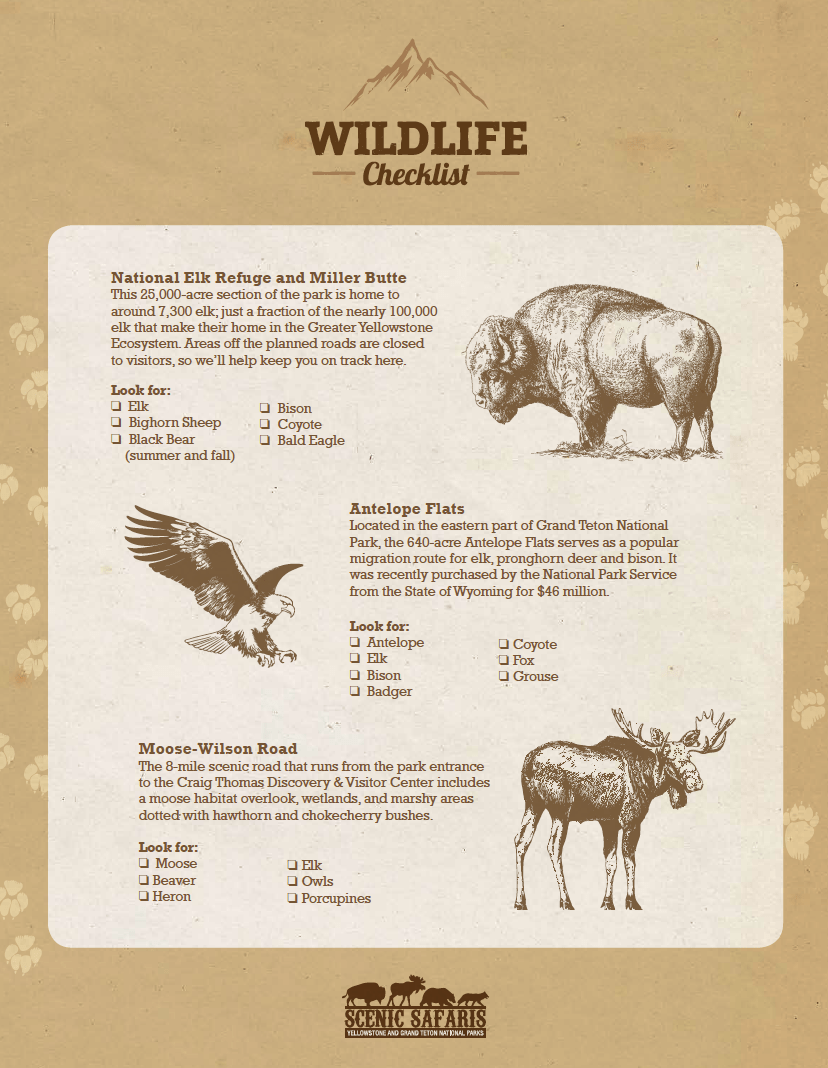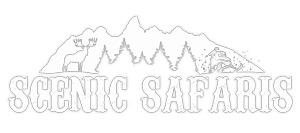Wildlife in Grand Teton: A Printable Checklist

More than 4 million people travel to Grand Teton National Park each year. With more than 310,000 acres of pristine wilderness and a mountain summit towering 13,770 feet above sea level, the park is a haven for wildlife as well as hikers, rafters and mountaineers. The more secluded paths around Kelly Loop and Antelope Flats, in the eastern section of the park, are home to larger mammals including deer and bison.
At Scenic Safaris, we understand that wildlife viewing is about location and timing. Our Grand Teton Sunset Tour takes guests through some of the park’s more secluded areas at dusk, when animals are more likely to be active. We’ve sought out prime viewing locations, from the National Elk Refuge to the aptly named Antelope Flats and Moose Wilson Road, both home to herds of their namesake.
Here are just a few of the animals you might spot during your Grand Teton adventure:
- Elk – Part of the deer family, elk are brown in color with darker heads and lighter tails. Mature males shed their antlers each spring, while antlers are at their fullest towards the end of August.
- Bighorn Sheep – Easiest to spot in November and December, when warring rams become more active and battle for their place in the herd. Once a migrating herd, the sheep here now stay on or below Miller Butte’s slope and isolated from other sheep in the park.
- Bison – The Yellowstone Ecosystem has been home to native populations of buffalo since the days of the caveman. Their numbers grew and dwindled with hunt periods and bacterial infection, but herds have stabilized. Today, bison can be spotted throughout Yellowstone and Grand Teton.
- Bald Eagle – The Snake River and tall trees of Grand Teton attract these North American birds of prey. Look in older trees and you might spot a bald eagle nest; at up to 13-feet-deep, bald eagle nests are among the largest tree nests in the world.
- Moose – While mating season happens in the fall, winter is prime time for observing Moose in the wild. They love cold weather and can often be found playing in the snowy roads until spring’s sunshine drives them closer to the peaks.
- Grouse – A chicken-like bird with spiky plumage, they have feathers down to their toes. They mainly feed on plant matter, and stay close to home all year round.
As with most National Parks, the wildlife you’ll see at Grand Teton varies by season. From beaver and birds to bison and the occasional black bear, there are animals to be found year-round throughout the park’s ecosystem. If you’re ready to book an amazing sunset tour of Grand Teton National Park, contact us today.
